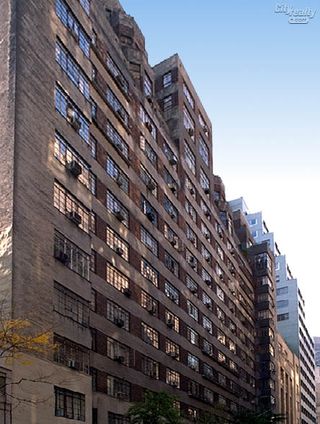 Carter Horsley
Carter HorsleyDec 23, 2011
Carter's Review
This building and its "twin" across the street at 310 East 44th Street were built in 1929. The 18-story buildings contain a total of 643 rental apartments. Although they appear quite simple, when they were erected they were considered quite bold.
They were built by the Beaux-Arts Development Corporation, a venture of the Beaux-Arts Institute of Design that was moving from its former location on East 75th Street into its new headquarters building on the same street.
The venture was composed by many prominent architects and the project was designed by Raymond Hood and Kenneth M. Murchison. Hood is famed as the architect of the former McGraw-Hill Building and the former Daily News Building, both on 42nd Street, the former American Radiator building on West 40th Street, and his important role in the design of Rockefeller Center.
The horizontal treatment of the façades with white, red and black brick and the use of industrial materials reflected the Art Moderne style then prevalent in Europe.
Originally built as apartment hotels, the building's units had two Murphy beds in 13-by-22-foot rooms, custom-designer refrigerators, serving pantries and small bathroom fixtures. A few double-height "artist" studios were included on the top two floors.
Because no kitchens were provided, the south building had a restaurant, the Cafe Bonaparte, that provided room service.
The buildings' center portions are recessed from the building line creating corner windows at the ends, an unusual but quite pleasing treatment. The buildings replaced tenements and were in an industrial area when built, one that has subsequently been transformed by the United Nations, whose nearby park is a fine amenity.
It is interesting that such a relatively stark design would emanate from an institute devoted to the elaborate decorative glories of the Beaux-Arts traditions. The buildings were named official city landmarks in 1989.

- Rental built in 1931
- 1 apartment currently for rent ($3.1K)
- Located in Turtle Bay/United Nations
- 320 total apartments 320 total apartments
- Doorman
- Pets Allowed
 6sqft delivers the latest on real estate, architecture, and design, straight from New York City.
6sqft delivers the latest on real estate, architecture, and design, straight from New York City.
